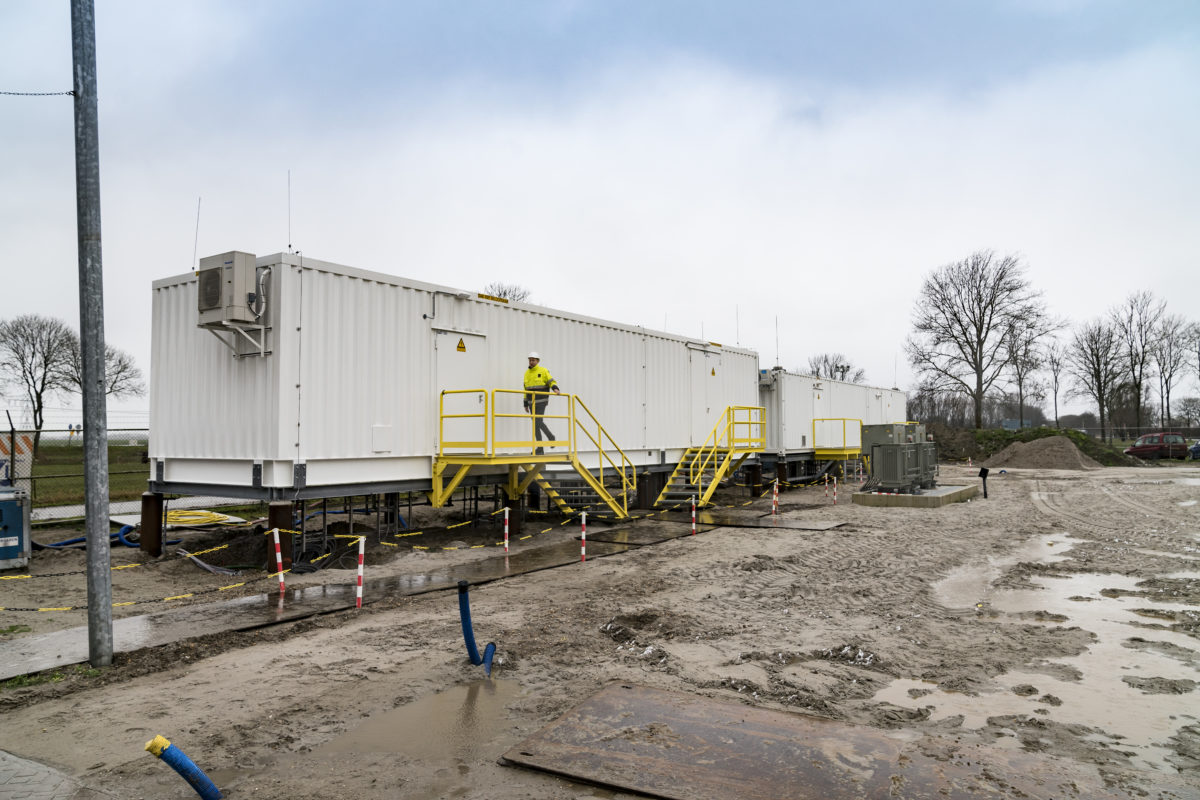Dutch transmission system operator Enexis is ramping up its grid capacity by 1 GW with 11 mobile, medium voltage substations. The measure is aimed at reducing congestion in the northern Netherlands, where grid capacity is too limited to accommodate new renewable energy facilities.
The company is investing around €43 million in the new “e-house” substations which can be quickly supplied by the manufacturer without the need for much extra manpower from the grid operator. Enexis said it tested four pilot substations last year.
The first mobile substation should be operational this year, with all 11 stations to be installed in the provinces of Groningen, Drenthe, and Overijssel, the regions worst affected by grid congestion. “In practice, this means that we can connect additional solar parks or wind farms earlier,” said Han Slootweg, director of network strategy for Enexis. “And with that we can shorten the waiting list.”
Legislation
Roll-out of the substations will be accompanied by legal changes enabling regional grid operators to use spare transformers for the integration of renewable energy. The new rules will also help national grid operator Tennet add grid capacity. In October, Tennet announced a €235 million plan to enhance grid capacity in the northern Netherlands. The investment, Tennet said, came on top of €1 billion it had spent on previous expansion.
Popular content
In January 2019, Tennet began to raise concerns about capacity constraints blocking the deployment of new solar projects in Groningen, Drenthe and Overijssel.
Late last year, Energie-Nederland and lobby groups Holland Solar and the NWEA said around 700 MW of solar and wind generation facilities would miss out on SDE+ large scale renewables incentives if grid congestion in the northern regions was not properly addressed.
Enexis, natural gas infrastructure specialist Gasunie and oil supplier Nederlandse Aardolie Maatschappij BV (NAM) in December said they were considering the use of excess solar capacity in the northern Netherlands to produce hydrogen.
This copy was amended on 07/02/20. pv magazine has been unable to determine whether the mobile substations will cost Enexis €43 million or €43 billion, as both figures have been widely reported. Given the 2019 annual figures stated the company posted revenues of €738 million for profit of €119 million, the €43 billion figure appears unlikely.
This content is protected by copyright and may not be reused. If you want to cooperate with us and would like to reuse some of our content, please contact: editors@pv-magazine.com.



The company is investing around €43 billion in the new “e-house” substations.
The focus on providing and ensuring a continuous supply of power is significantly driving the mobile substation market growth.